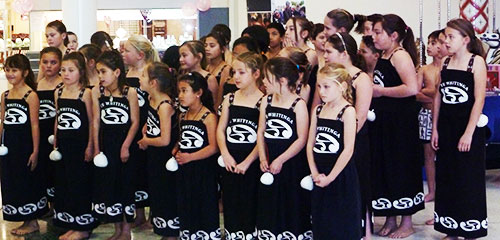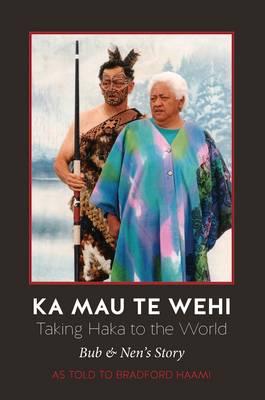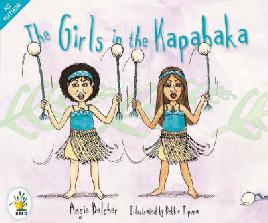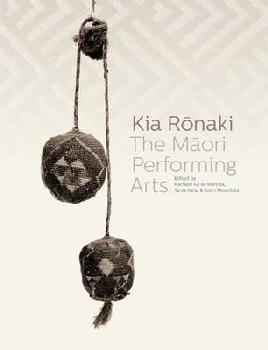Kapa Haka is commonly used to describe a modern day performance of traditional and contemporary adaptations of Māori waiata, mōteatea, poi and haka.
The prestigious Te Matatini National Kapa Haka Festival is being held in Christchurch from Wednesday 4 March to Sunday 8 March 2015.
Kapa haka at Eastgate. Flickr: CCL-2012
Kapa haka is an avenue for Māori people to express their language, culture and heritage through song and dance. It occurs in both informal and formal settings - on marae and sports fields, at iwi, Māori, hapū and whānau events, in schools and education organisations, in community and business settings, and at kapa haka shows, events and competitions.
Kapa haka can be competitive or non-competitive. It can be performed by any number of people, men and women, young and old.
Music for kapa haka is primarily vocal and sung in te reo Māori (Māori language). The musical instruments generally used in kapa haka are the guitar, the pūtātara (conch shell), the sound of the poi and rākau and body percussion.
Find our more on our kapa haka page.
Kapa haka resources
- Our kapa haka page
- Search for kapa haka resources in the library catalogue.
- Search for kapa haka on DigitalNZ.
- Te Papa Kāinga ō te haka - The Home of Haka on Māori Television
Te Matatini National Kapa Haka Festival
What is kapa haka?
Christchurch City Council Māori Arts adviser Paula Rigby talks about the Ngā Pākihi Whakatekateka o Waitaha Senior Regional Kapa Haka Competitions.
It’s all about being different being out of the box. The tutors and members of the group are working on creating new tunes, songs and moves to make it more vibrant. That’s what keeps the Māori performing arts alive. You have to keep building to keep your reputation up, so you keep looking for new ways of doing that.
Regional competitions have an extra edge, she says.
You want to go away and represent at a national level. You do whatever you can to make the judges think ‘wow, this group has to go’.
Kapahaka is a dynamic and ever-changing art form and choreography has become an important element, she adds.
It’s not just about standing in straight lines on stage any more. There’s lots of movement and rows (of people) moving around and interchange between men and women.
Taking the chance to watch kapahaka is a must, she says.
It’s incredible. If people have the opportunity to go they should. You may not understand it, but I can guarantee that it will be a moving experience.
Different disciplines
Groups have some compulsory elements to their performances, Paula explains.
You have to have an entrance to get onto stage. You have to incorporate a waiata aringa which is an action song, a poi, which is usually done by the women, the haka, and an exit to get off stage.
A choral piece to show that groups can work in harmony and balance and a more traditional item chants from the more formal setting of the marae - are also required elements. Traditionally women perform the poi piece and men dominate the haka, but more groups have mixed performances now, Paula says.
Kapa haka groups practice and perform items from many different iwi and the groups are pan-tribal.
Members of the group will learn some of the songs from their own area, and then there are those popular songs that are created for other competitions that groups like to keep alive.






Add a comment to: Kapa haka